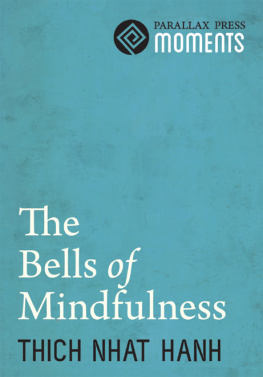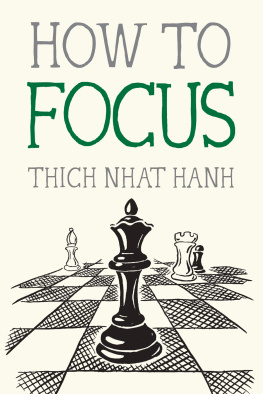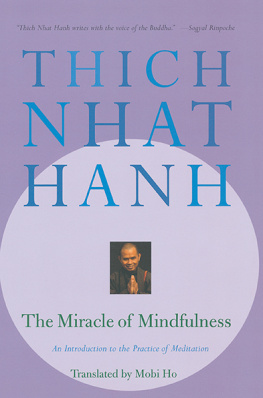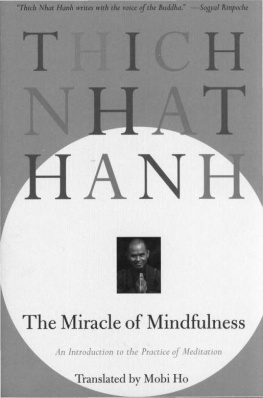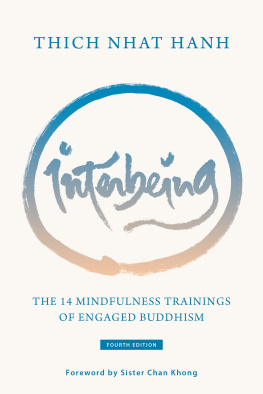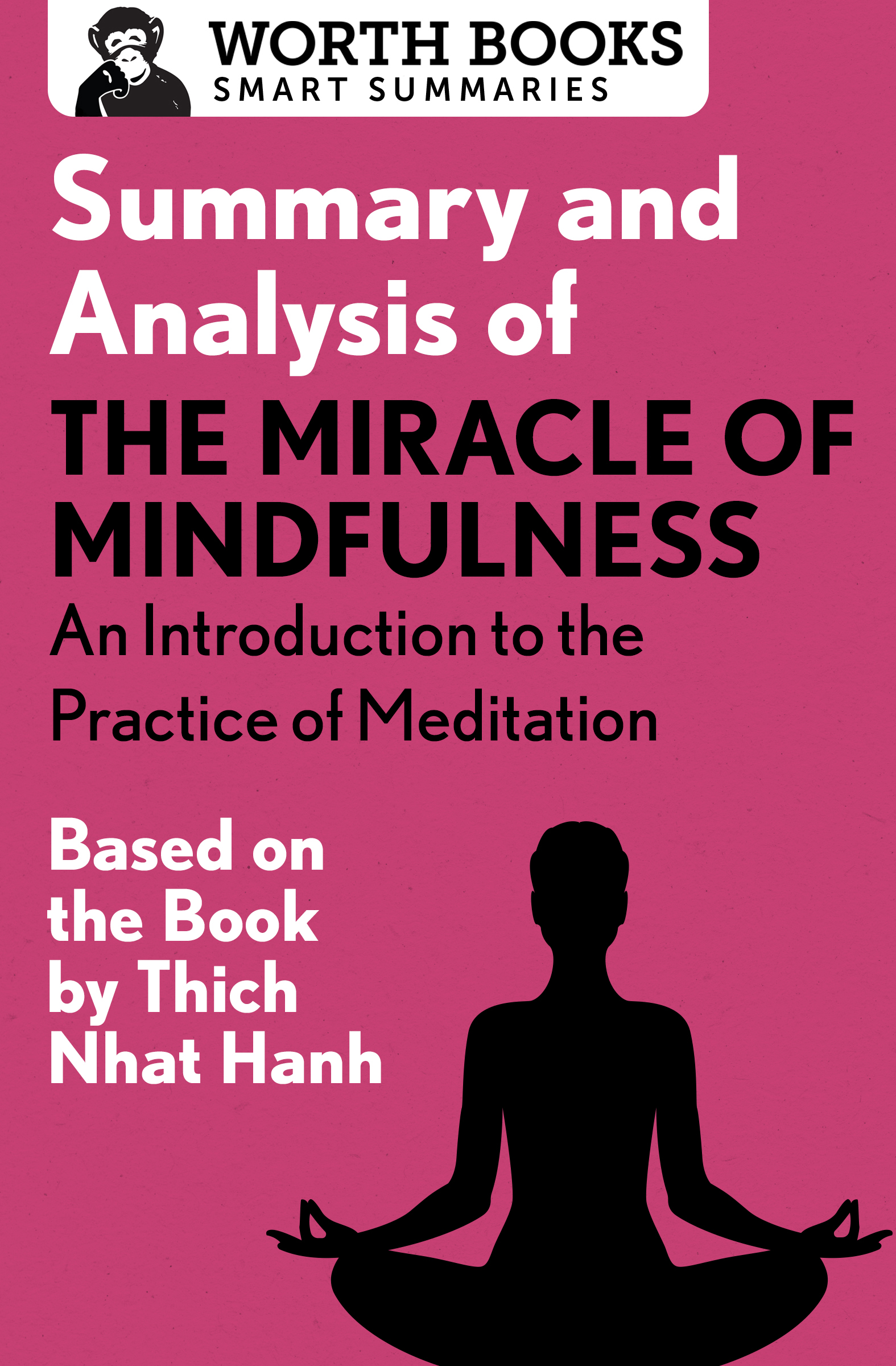Summary and Analysis of
The Miracle of Mindfulness
An Introduction to the Practice of Meditation
Based on the Book by Thich Nhat Hanh

Contents
Context
The Miracle of Mindfulness, first published in 1974, began as a letter that Thich Nhat Hanh wrote to Brother Quang, a fellow practitioner of Buddhism who worked at the School of Youth for Social Service in South Vietnam, which Nhat Hanh founded before his exile in 1966.
The Zen Master wrote the letter to encourage people at the school to continue the humanitarian work they were doing amid the great violence and treachery their countrymen faced each day.
This was at the height of the Vietnam War, and students from the institution were being attackedsome were even kidnapped and killedfor spreading their peaceful message. Thich Nhat Hanh wanted to encourage students at the school to maintain a sense of love and understanding while performing their mission of service to others.
Decades since the original letter was written, many Western readers are familiar with the concepts of mindfulness and meditation, practice yoga, and are keen to learn methods that will help to improve their lives. Many studies have proven the health benefits of meditation, including reduction in stress, anxiety, and insomnia, and an increase in ability to focus.
The Miracle of Mindfulness offers a straightforward approach for beginners who are interested in starting a meditation practice, with exercises, visualizations, personal stories, and beautiful metaphors.
Overview
The hustle and bustle of modern-day Western life has made multitasking a necessity in order to get everything done. However, in order to truly enjoy life and live every moment to the fullest, we must slow down our minds and our bodies.
The Miracle of Mindfulness: An Introduction to the Practice of Meditation by Vietnamese Buddhist monk Thich Nhat Hanh teaches how to do just that. The book shows how to do everythingfrom washing a dish to eating to taking a bathwith an acute awareness and appreciation.
According to Nhat Hanh, this awareness starts with proper breathing. The Miracle of Mindfulness contains several breathing exercises that facilitate mindfulness and relaxation. In addition, the book explains how to train the mind to be at peace, even in the face of life challenges and negative thinking habits. Throughout, Nhat Hanh uses anecdotes to illustrate how these concepts can be applied to our day-to-day lives.
Summary
Chapter One: The Essential Discipline
Thich Nhat Hanh recalls a conversation he had with his friend, Allen, as they watched Allens rambunctious seven-year-old son, Joey, play around them. The two men discussed the hectic nature of family life and Allen revealed that he used to feel that the responsibilities of being a husband and a father didnt leave him with enough time for himself and doing the activities he enjoys, such as reading and going for walks. However, he realized that the time he spends with his family is actually his time. Spending quality time with his newborn baby or his wife, or doing chores around the house, was a gift. When Allen came to this conclusion, he found that instead of feeling he had no time for himself, he knew he had unlimited time.
Thich Nhat Hanh goes on to explain the importance of being present in everything one does, no matter how mundane it may seem. For example, washing dishes should not be seen as a chore to be completed quickly. One should wash their dishes with complete attention and awareness.
Similarly, one shouldnt eat a tangerine by mindlessly plopping sections into our mouths and chewing without regard for what were eating. Nhat Hanh advises that when we eat the fruit, we should be one with what were doing. This is important because without this sense of mindfulness, one is not able to appreciate the miracle of life. When we are taken out of the present moment by thinking about the future or the past, we cannot truly live.
When we are mindful and aware, we realize that everything we do, even chores and obligations to others, can be an enjoyable and treasured part of the day.
Chapter Two: The Miracle Is to Walk on Earth
The first step toward living a life of mindfulness is to be able to focus your awareness. Nhat Hanh explains how the concept of mindfulness can be practiced when one takes a walk in nature because when we are conscious of and enjoy each step, we can be mindful of the miracle of beauty around us.
If you can control your breathing, you can control your mind and the thoughts you allow yourself to entertain.
To control your breathing, work on extending the length of time you spend on inhalations and exhalations. Use a phrase to help count the length of your breaths. If your goal is to breathe in for a count of six, you may think a six-word phrase such as My heart is now at peace. Similarly, if youre trying to extend your breaths to a count of seven, seven-word phrases like I walk on the new green earth can help. If you are practicing breathing control while walking, consider one word for each step you take.
Another way to control the breath is by counting it. As you take an inhalation, count one. Then as you exhale, count one. With each inhalation and exhalation, increase the number until you reach ten. After youve reached ten inhalations and exhalations, start counting at one again and continue. Do these counts with full awareness, focusing on each breath and number. Without this focus, it will be easy to lose count. If that happens, start over at one and remain conscious of what youre doing.
Being mindful is the process of living in the present moment, no matter what youre doing. Proper breathing is the key to maintaining mindfulness because it helps to keep us in the present. When we are in this state, we can live in the moment instead of worrying about the past or the future. For beginners, practicing mindful breathing while lying down is recommended.
Nhat Hanh says, Breath is the bridge which connects life to consciousness, which unites your body to your thoughts. Whenever your mind becomes scattered, use your breath as the means to take hold of your mind again. The skill of mindful breathing enables us to focus, and to appreciate every action we take.
Chapter Three: A Day of Mindfulness
In order to become accustomed to living a life of mindfulness, Thich Nhat Hanh suggests that beginners start by dedicating one day each week to practicing it, from the time you rise to the time you turn in at night.
During this day, practice focusing on your breathing and taking control of your thoughts. If household tasks are required, each should be completed in a relaxed, slow way. This will allow you to really become one with the work youre doing.
Taking a bath for at least thirty minutes will help you feel refreshed. Talking should be kept to a minimum, but if you must speak, do so in a conscious way. Prepare meals with intention, and eat slowly, considering and experiencing each bite.
Having a single day devoted to mindful living can, in time, shore up your skills and influence how you carry yourself throughout the week.
Chapter Four: The Pebble
Although we need sleep to function, the nature of how we sleeptossing and turning, muscles tensing, and dreamingis not particularly restful. Meditation, however, can offer one total rest.
Learning how to sit properly during meditation is crucial to enter a restful state. You might try:








